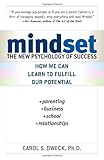It was back when I first started teaching. One Saturday I was out with my girlfriend at the time and we were fishing through the used books in the basement of the local university book store. (Yup, that’s right, that’s the geeky kind of casual dates I take girls on. And I’m single, imagine that! :) ) So anyway my girlfriend hands me a book she finds – something about “dance” and “education” and some really bland cover. I thought “looks pretty boring, but sure, I’ll get it, it’s only $2.” And then it sat on my bookshelf for a few months.
So one day I finish some book and wonder “what should I read next? maybe I’ll grab something from what I have already instead of buying something new at the bookstore.” (Amazon wasn’t around yet.) So I pick out this book again -- “Modern Educational Dance” by Valerie Preston-Dunlop and I start reading it.
Understand this is a time just into when I started teaching, when I really start to question “how do you train really good dancers? not just any dancers, but really great ones, for the most part looking around it’s hit or miss – random if the teacher can even teach – random if the student can learn.” And being the scientific mind that I am, thinking “there’s got to be a better way, there has to be a more successful and more organized way.”
So I get into this book, and it’s awesome. It for the most part is an English translation of the work in German of Rudolf Laban plus some extra writing by Valerie Preston-Dunlop on her analysis of it. The main work is a series of 16 lessons grouped into the themes of body, space, dynamics, and social relationships. Laban breaks down a very systematic way of looking at all movement in all it’s variations and even more importantly HOW TO TEACH IT. It’s genius.
I of course got busy working on improving my dancing. It’s important to DO and not just KNOW. You need to practice and experiment to really learn, so every weekend I would go out clubbing. But while other people where busy getting drunk or hitting on girls, I was out on the floor doing the exercises from the book. Experimenting with curved lines versus straight lines. Playing with heavy vs light dynamics or flexible vs direct or sudden vs sustained. Yup, dance geek, that’s me.
At the time I really didn’t realize that I should fit that all into my ballroom and latin dancing. Sadly there are a lot of dance teachers out there, stuck on very minor details that mean very little. Not to mention a very narrow minded focus that the only place to learn latin is from a latin teacher and the only place to learn standard is from a standard teacher – mostly really a sales tactic, good dancing is good dancing.
So one day I was taking a lesson from Jose Decamps and he starts explaining something to me. “So, like flexible and direct?” I say. And emphatically he says “YES!”. So we talk more about modern and Laban and Jose’s like, “why don’t you apply what you know about modern to your ballroom?” That was a big turning point for me.
Now you see it all the time. Michael Malitowski and Joanna Leunis have done several Blackpool lectures about Laban in Latin. Ruud Vermey has a whole chapter on it in his book “Latin: thinking sensing and doing”. You can find it in technique videos.
It’s well worth your time to learn what’s there and practice it. Take for example practicing your routines. For one month each morning do your dance routines in each of your dances and do them each once in all the eight basic Laban dynamics (wringing; pressing; floating; gliding; slashing; thrusting; dabbing; and flicking). And then do a round where you just mix it all up and have fun. I can guarantee if you do that for a month your dancing will be tons better. You’ll be able to learn movement better; you’ll move better yourself; probably improve your core strength a bit; you’ll be able to see other people’s style and be able to learn and replicate it sooner.
Oh… and the reason the book was only $2 – it was a misprint – there are about 50 pages printed twice in the book.
Further Reading…
| A HANDBOOK FOR MODERN EDUCATIONAL DANCE |
| Latin - Thinking Sensing and Doing in Latin American Dancing |
 | Laban for All |



